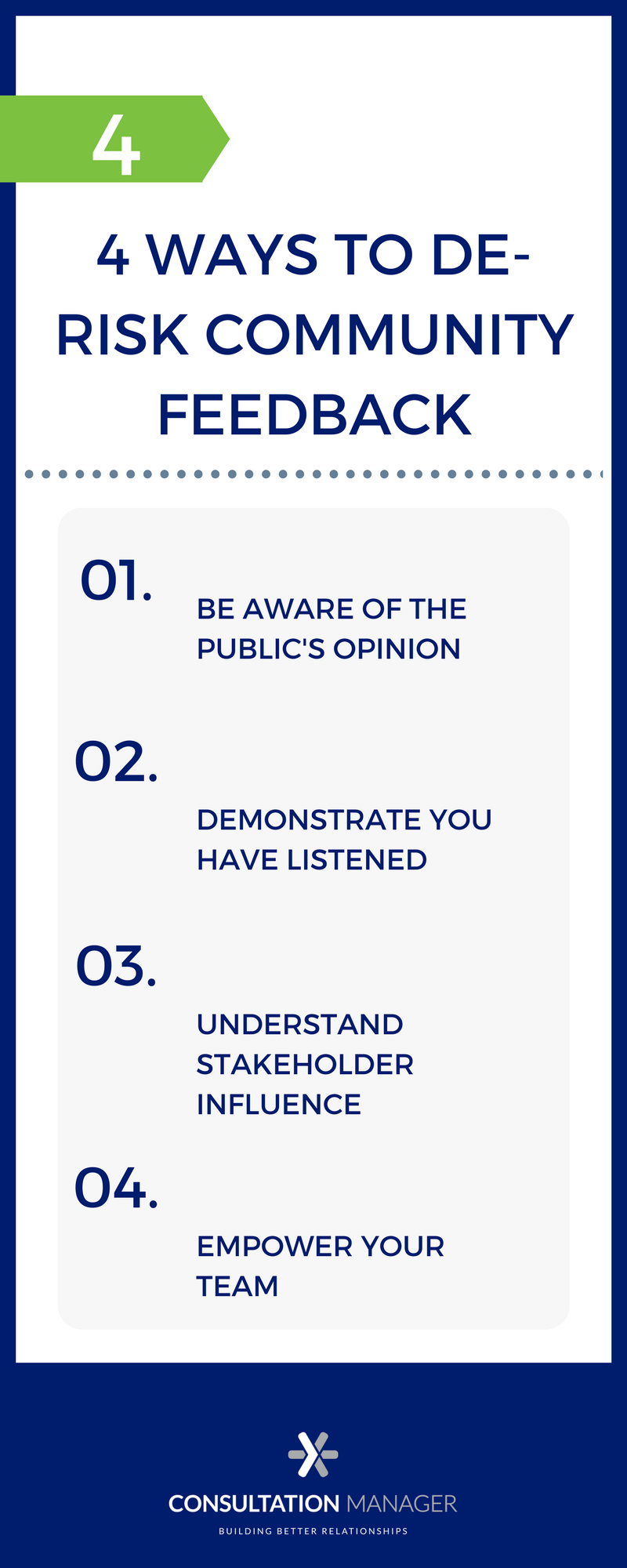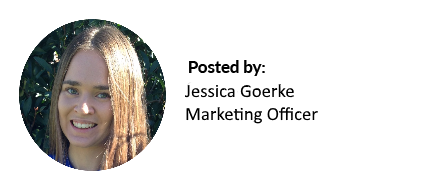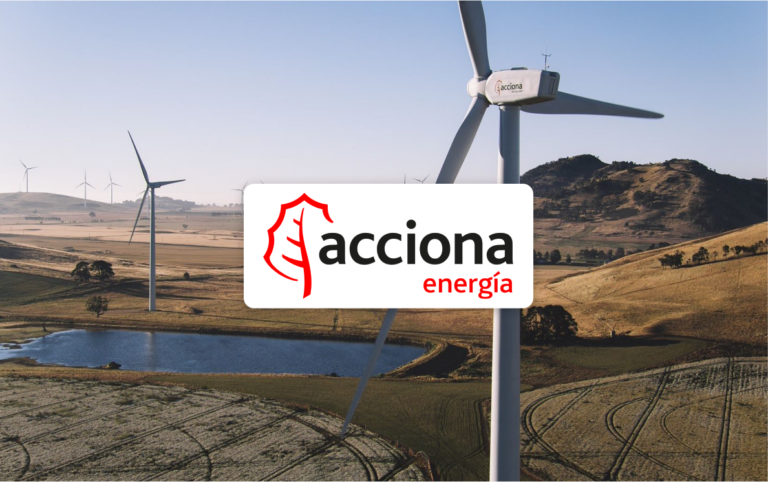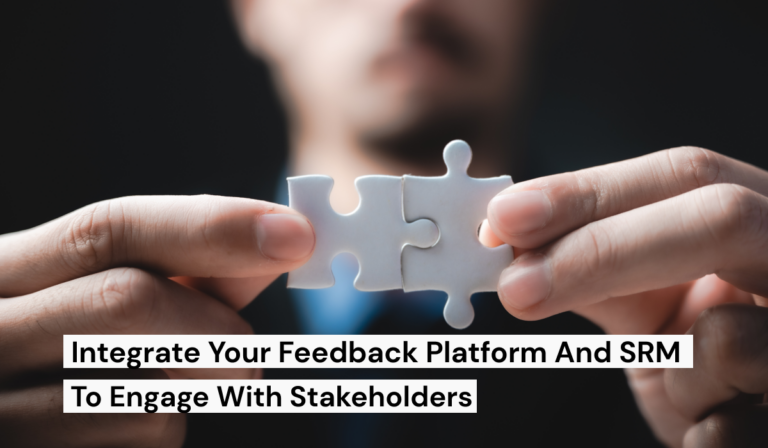Engaging communities throughout the lifecycle of major projects is just as important as in pre-planning phases.
Hearing feedback as your projects progresses is not only important in proactively managing your community but also in understanding risk.
The risks we are talking about here are those that are often detrimental – those that can quickly bring projects to a grinding halt, turn governments or escalate to litigation. Here are 4 key ways you can de-risk community feedback throughout the lifecycle of your project.
Be aware of the public’s issues
It’s important to get a well-rounded response on the publics’ opinion on a project. There are many online and offline solutions to increase participation rates. Social media, community feedback mapping, discussion forums and surveys, in-person meetings or offline discussions. When collecting the publics’ responses make sure to keep a record of the discussions in your data management system. This way, you can always look back on certain stakeholders and collect all the necessary information you need on a previous event.
Demonstrate you’ve listened
Public outbursts tend to be a cry for help and support. Before things go out of control, show the community you’ve listened and respond to their concerns. You can do this by setting up online and offline platforms to voice their opinions’. The worst thing you can do is ask the community to voice their thoughts’ about issues on managed platforms and never follow up with responses. Demonstrate you’ve taken notice by using your data-management system to filter data and create a public report, infographic, video or poster about the influence different stakeholders had on the final decision. As you involve the community in more projects, they will learn to trust your company’s decisions.
Understand stakeholder influence
Good decision-making involves strengthening the organisation-stakeholder relationship and building trust. Vested group members want a say in business decisions. Some may carry more influence over others. Be sure to listen to your stakeholders’ needs just as you would listen to members of the public. Yes, sometimes there will be disagreements on the most appropriate approach, but this is why effective communication is so important. Sometimes simply communicating the benefits and concerns of everyones’ ideas is enough to come to an agreement for an effective decision. Other times you won’t be as lucky and will need to spend a longer amount of time reaching a balanced decision. Overall, we can all agree having satisfied stakeholders is better than unsatisfied groups whose ideas were not heard. Remember, stakeholders want to see your project succeed by providing successful community feedback.
Empower your team
You can’t rely on yourself to make all business decisions. Sometimes you might be away on leave or your staff member is in a meeting with a stakeholder without you. Staff members are an important asset for your organisation. Make them feel empowered and ensure your team has access to all the relevant information to effectively communicate messages. Give them the ability to make goal-aligned, consistent and informed decisions.
Take control of your community engagement
One of the best ways to minimise the possibility of a risk is to encourage communication through monitored channels of communication. If you can direct the publics’ and stakeholders’ opinions to managed sources then you can control any negative stakeholder and community feedback. Don’t risk a small dispute over a project decision turning into a litigation. Document all your community and stakeholder conversations. Have mechanisms in place to hear their version and have a feedback system to keep them in the loop on decisions.

Have any questions about data privacy, data management or managing risk?
Contact us today! We’re more than willing to have a chat with you.
If you enjoyed this article, I personally think you will also enjoy our article about Reducing Public Outrage: Six Effective Strategies.





